In many ways, Darley Avenue in Chorlton-cum-Hardy is your typical Manchester street. It consists of mostly decent quality, semi-detached, inter-war social housing with a good amount of outside space. There’s been some recent new development on the site of an old school, consisting of smaller houses with less outdoor space. There is also a primary school, Barlow Hall Primary School, next to the new development.

The road itself is wide for its type, with quite wide pavements for most of its length. It runs parallel to Barlow Moor Road, which is one of the key routes between Chorlton, Didsbury and the M60.
In many ways, Darley Avenue should be the ideal location for safe walking and cycling routes within the area and beyond. It’s a quieter route than Barlow Moor Road, and it connects up to Princess Road at one end and Hardy Lane at the other, providing a links to Didsbury, Chorltonville and The Mersey Valley.
But there are issues with this route. Let’s look at some of them.
Speeding and rat running
Darley Avenue has seen a reduction in the speed limit from 30mph to 20mph, as part of Manchester City Council’s plan to reduce speed limits on residential streets. This is a welcome move, as 20mph is much more appropriate for this street.
But other than the fitting of 20mph signs and traffic enforcement signs, nothing else has changed. Reducing the speed limit, without changing the design of the street or stopping the rat running, is unlikely to have any significant impact on drivers’ behaviour.

There are speed humps along the length of Darley Avenue. It’s evident that these have been here for some time. They’re generally in a poor state of repair and do little to slow cars down; they do more to slow bicycles down. This means that it’s not uncommon to see cars travelling way above the 20mph limit, at somewhere around 30-40mph.
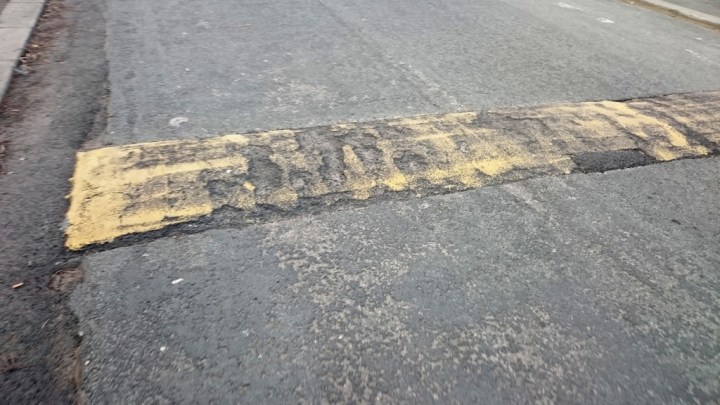
Pavement parking
Despite the width of the road, pavement parking is a problem along the length of Darley Avenue. It’s hard to see why this happens. There’s plenty of space on the road and there’s no parking limitations.

I’m sure some would argue what harm does it do, there’s wide pavements. Indeed, the pavements are wide and generally, the pavement parking isn’t causing as much as of an obstruction as it does in some places.
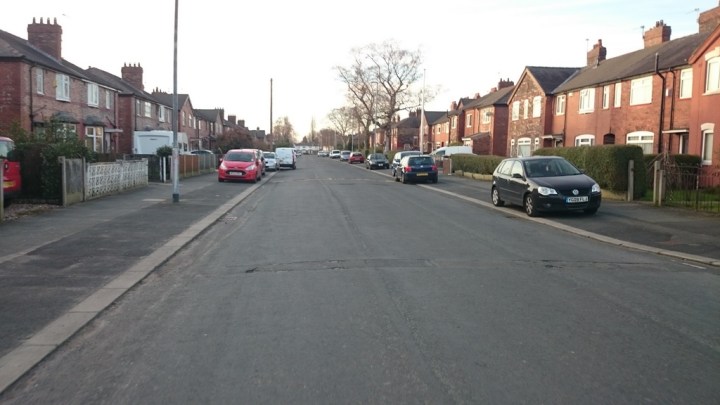
But these pavements should be for people walking and for kids playing, not for cars. Having a pavement full of cars creates a danger, or a sense of danger, where there shouldn’t be one.

New development
Developments like these should be setting the standard in sustainable housing. Now, I can’t comment on the quality of the houses themselves or their energy efficiency. But what I can comment on is the inadequate car and bike parking of these new houses and the impact that has.

As you can see, even the most modest of family cars doesn’t fit on the driveways provided, leading to cars hanging over onto the pavement! Combine this with cars already parking on the pavement and a narrower pavement, and you’re faced with obstructions to buggies and wheelchairs.
No effort has been made to provide any form of bike parking. I know, hardly that surprising right now in the UK. But this should be provided as a minimum in new developments, to encourage people onto bikes and away from cars, particularly for short journeys.
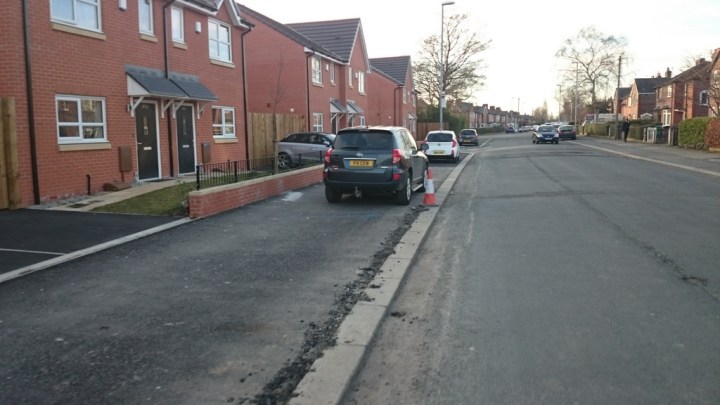
In addition to this, the development itself has been very disruptive to the area. With many construction lorries blocking the roads and construction vehicles obstructing the pavements, right next to a primary school.

Metrolink
At the end of Darley Avenue is Hardy Lane, which connects up to Barlow Moor Road, The Mersey Valley and NCN 62. Hardy Lane has seen a lot of development in recent years with the extension of the Metrolink line to Manchester Airport.
It is a very wide road and could easily accommodate fully segregated cycling facilities, but instead, Manchester City Council and TfGM have opted for paint on the road, next to the Metrolink tracks. Combine this with parking spaces and a door zone and you’ve got a potentially lethal combination.
Hardy Lane could have been an opportunity to provide good quality facilities, but instead, it acts as a barrier.
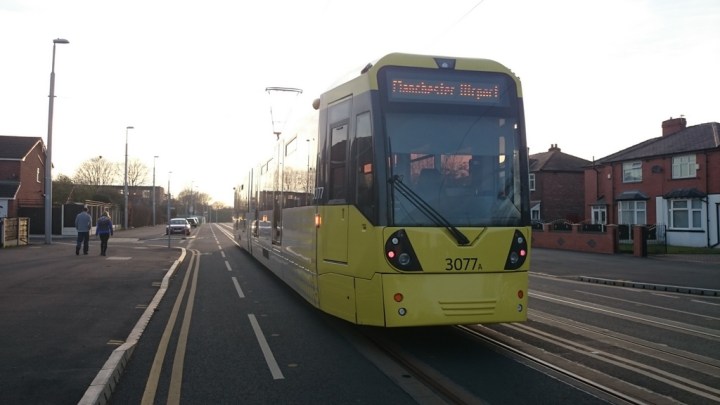
What could be done?
So what could be done to improve a road like Darley Avenue, given there’s plenty of potential to provide safe walking and cycling routes into the area and beyond?
To address the speed issue, the road needs to be redesigned to match the new 20mph limit, as this Guardian piece from Rachel Aldred says – just putting up signs alone will not achieve this. Taking the Dutch design principal of Sustainable Safety, Darley Avenue should be classified as an access road and receive the appropriate treatment.

Work has been done previously to reduce the number of rat runs, but it’s still possible to drive through the estate, as an alternative route to Barlow Moor Road. Indeed, many do when Barlow Moor Road is busy. More filtered permeability should be introduced to remove these rat runs and the amount of through traffic. This would make Darley Avenue quieter and more liveable.

Pavement parking is endemic on Darley Avenue, even though there’s plenty of driveways and a road wide enough to accommodate parking. To address this, designated parking bays should be introduced, showing clearly where people should be parking. In addition, the police and/or council need the powers to stop pavement parking, though as we know that’s a bigger issue that we’ve been waiting on being addressed for some time.
In terms of new development, is this really the best we can achieve? Given that new housing is a priority for the GMCA, they should be setting much higher standards for residential development. This should include everything from the energy efficiency of the homes, the environmental treatment of the development and the impact to local roads, schools and other amenities.
Standards should also include provision to encourage the use of sustainable forms of transport. For example, by providing dedicated cycleways and residential cycle parking. Anyone who’s owned a bike knows a big factor in how much you use is down to how easy it is for you to get it out of your house and get riding. If you need to get your bike out of a shed, then out of a back garden to use it. Then for many people, it’s already less attractive an option than the car sat out on the driveway, especially for shorter journeys.

Anyone who’s seen how things are done in The Netherlands will have noticed the amount of residential parking available, and how common it is for bikes to be parked outside and never brought into the house. Indeed, given the weight of many Dutch bikes and bakfietsen (cargo bikes) in particular, bringing it inside is not an option.
Going back to the Dutch principal of Sustainable Safety, Hardy Lane at the bottom of Darley Avenue would likely be classed a distributor road. This would mean fast and slow users of the road would be separated, so segregated cycleways for bicycles, away from the cars and trams. Leading to further cycleways at the junction with Barlow Moor Road, Mauldeth Road West and beyond into Chorlton. A local network like this would enable people to make short journeys in the area, reducing the need to reach for the car keys.
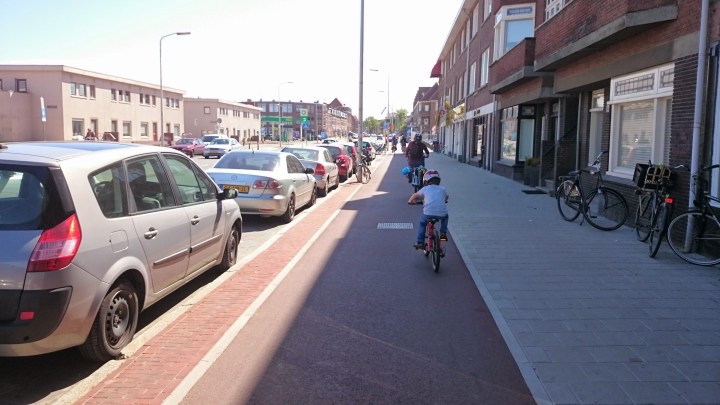
In this post, I’ve tried to highlight some of the things that typically affect most residential streets in Manchester, and in the UK as a whole. The issues highlighted are not unique to this country, and there are plenty of examples of how they can be tackled, if there’s the will to do so.
I think the Mini-Hollands programme in London could be the first seeds of this happening in the UK. In many ways, they are more interesting than the much publicised Cycle Superhighways, particularly as they are trying to encourage using sustainable forms of transport for shorter trips, at a local level, where I think there’s much more opportunity to see a more varied range of ages and backgrounds. Cycle Superhighways, on the other hand, are much more focused on commuting, generally at greater distances.
I’d love to see Manchester get its own Mini-Hollands programme. I admit, it’s difficult to see this happening right now. But maybe with an elected mayor, and GMCA looking to tackle air pollution, anything may be possible.


Looks pretty quiet to me; not a single moving car on the road in any of the pics. Can’t see a problem. There are many far worse examples. I’d have absolutely no problem cycling down that road from the evidence presented.
LikeLike
That’s partly my point. This isn’t a busy road and there are plenty worse examples, but speeding, rat running and pavement parking really do cause problems. Not necessarily to those passing through on bikes, but on those that live there. Also, when it comes to encouraging the take up of cycling, we need to be thinking about inexperienced and/or young riders, who may still find a road like this off-putting.
I don’t live here, but where I live, we’re faced with similar issues. Mainly speeding and rat running, pavement parking is thankfully less of an issue. I also have two kids, and don’t feel that comfortable with them playing in the street because of this.
There’s a lot of overlap between the needs of cycling and liveable streets. Indeed, if this was a more liveable street, there would probably be little need for any dedicated cycling infrastructure. So rather than just campaigning for cycling infrastructure alone, we should be looking at how cycling fits into a bigger set of improvements to make our neighbourhoods more liveable. Maybe that way, we can win the hearts and minds of those that don’t (currently) ride a bike.
LikeLike
“To address this, designated parking bays should be introduced, showing clearly where people should be parking.”
Put them on alternating sides of the street, creating a sort of slalom (with enough room between parking bays for drivers to pass each other). The car-free middle part should then be just too narrow to just drive straight on at speed.
Oh, and: 1 bakfiets, 2 bakfietsen 😉
LikeLiked by 1 person
Bakfiets now corrected to bakfietsen 🙂
LikeLike